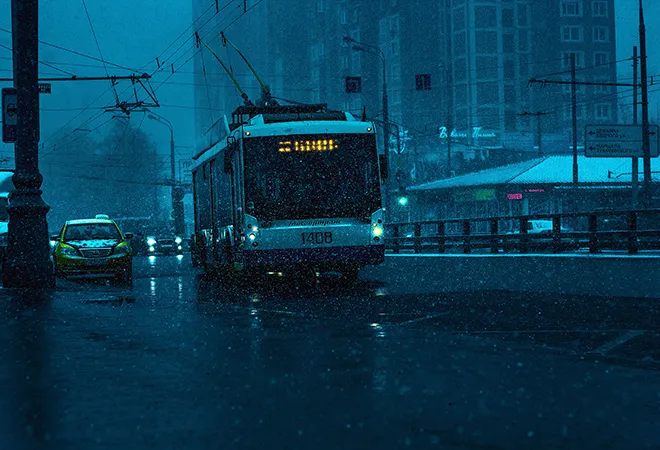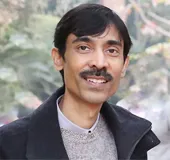
Across the globe, the problem of growing traffic congestion in cities has grown alongside the demand for more transport services. Efficient traffic management, on the one hand, and providing good travel facilities to city population on the other, remain an enigma.
To deal with these problems, city policy makers, planners and managers have three major tasks to attend. First relates to strengthening and upgrading public services, the second involves achieving efficiency in road traffic management, and the third pertains to reducing the number of motorised vehicles.
In India and elsewhere, novel initiatives are underway to overcome the emerging problems. At the same time, city governments are struggling with road traffic management, and hence, further interventions are required.
There is a big difference between Indian and many other global cities, such as Beijing, London, Moscow or Shanghai. Though road traffic congestion is experienced in all these cities, the mechanisms to deal with the problem vary.
The city government of Moscow has come up with a successful intervention that has earned an award for sustainable transport development, and can be useful to other cities. The integrated traffic management plan, named Intelligent Transport System (ITS), has efficiently improved traffic congestion in Moscow. After the implementation of the ITS plan in 2012, Moscow's ranking on congestion level has considerably improved from number one most congested city in 2014 to number 13 in 2016 among 390 global cities, as per the Tom Tom traffic rating company. Moscow is now ranked third among the 10 major world metropolises in the road safety record, according to the analysis at Lomonosov Moscow State University.
Read the GP-ORF book | Smart cities movement in BRICS
The Intelligent Transport System allows for monitoring and regulating traffic, predicting traffic situation, and balancing road capacity with actual traffic flows. The system consists of 2048 CCTVs and 1402 still cameras installed at various places in the city. The cameras are connected to a central control and monitoring room at the Moscow Traffic Management Centre, where a huge digital information screen displays real-time images of traffic movements and information on the actual conditions on the roads. Procurement of real-time information on traffic situation in this manner is extremely helpful.
Announcements are made and latest information (updated every 1-2 minutes) is provided by operators on duty in the control room to motorists and city management agencies on Moscow 24 TV channel, information screens (157) placed along city roads, website and radio about average time to reach a particular site, areas of worst traffic congestion (delay hotspots), broken-down vehicles, accidents, violations, etc.
Adaptive/coordinated traffic signals (2,313) based on detectors are installed at 1,698 intersections. About 40,000 normal traffic signals are functional at other intersections. This helps in better regulation of traffic. Further, it takes an average of one hour and 30 minutes by the agency to repair a traffic light.
No stop rule is imposed to control motorists from using the tramway, and from parking vehicles on pedestrian sidewalks. Some roads function as one-way roads enabling free transit of cars and additional space for parking.
Changes have been made in the parking procedure. Previously, perpendicular parking on the road allowed for 2.9 mts. free road space. As per the norm, free road space must be at least 5.9 mts. By parking in parallel on the road, there is an increase in free road space up to 6 mt. Road sidewalk parking is also prohibited for the convenience of pedestrians.
Parking spaces are computerised for optimal utilisation. For making payments, users have the options of parking meters, mobile applications.
A newly developed surface public transit network, namely Magistral, allows smooth and convenient travel. A fleet of buses, trolley buses and trams run at higher frequency and connect points which proved most popular among passengers. Seventeen direct radial routes connect the city centre with the outskirts, as well as non-central areas with each other. This transit system is 20–30 % faster than car, and about 1.5 million passengers now travel congestion-free and ride with speed and comfort every day.
With the introduction of traffic management reforms, the following positive changes are observed in Moscow:
- 26% more residents contact Moscow transport service centre for assistance on traffic issues.
- Average traffic speed increased by 12% in the last five years; average Moscow Ring Road driving speed increased by 5%.
- Over speeding decreased by 15% within six months of 2016 (January to June).
- More road space available for movement of vehicles because of parallel parking on road; number of parking violations decreased by 27% in June 2016.
- Road sidewalks freed from parked vehicles for safe movement of pedestrians.
- Search time for a parking space reduced by 65%, which also reduced on-road congestion.
- Road traffic accidents, injuries and deaths reduced between 2015 and 2016.
As India tries to achieve the goal of making smart cities that offer smart mobility, valuable lessons can be learned from existing proven practices. Application of some of the above-mentioned traffic management measures would be useful in achieving the ambitious goal.
The traffic management information on Moscow is based on the author's visit to Moscow Traffic Management Centre.
The views expressed above belong to the author(s). ORF research and analyses now available on Telegram! Click here to access our curated content — blogs, longforms and interviews.




 PREV
PREV


